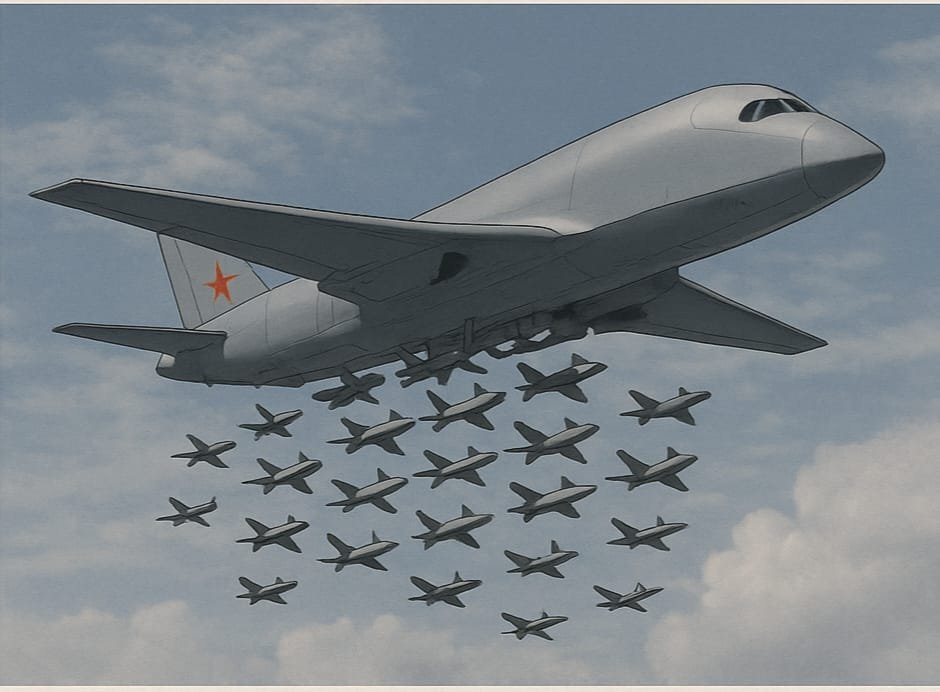A silent revolution is reshaping the battlefield — and it’s flying at 50,000 feet.
China has unveiled its cutting-edge JY-Tian drone mothership, a formidable platform that could mark the beginning of the end for traditional naval power projection, such as aircraft carriers. This paradigm shift reflects a broader, global transformation in defense strategy, where unmanned, AI-powered systems are rapidly taking center stage.
A New Kind of Air Dominance
The JY-Tian drone mothership isn’t just a large drone — it’s a strategic game-changer. Each of these aerial platforms is capable of carrying up to 100 kamikaze drones, along with electronic warfare equipment and surveillance payloads, totaling 6 tons. It operates at a cruising altitude of 50,000 feet — far above the reach of most air defense systems — and has an impressive operational range of approximately 7,000 kilometers.
Its missions are varied: reconnaissance, electronic jamming, direct attacks, and swarm operations. The mothership can identify and suppress enemy air defenses from extreme altitudes and then dispatch swarms of drones to overwhelm high-value or distributed targets. This can be done with no risk to human pilots, minimal logistical burden, and at a fraction of the cost of traditional manned systems.
Strategic Implications: Cheaper, Safer, Deadlier
With guidance provided by China’s BeiDou navigation system and other onboard AI capabilities, the drone mothership can operate independently for long durations, feeding real-time intelligence to command centers while jamming or disabling enemy communications and radar systems.
In an actual combat scenario, the implications are chilling. A drone mothership hovering far above the battlefield could unleash a swarm of 100 drones, each targeting a different enemy asset, or coordinate a mass suicide attack on a strategic location — without risking a single human life.
Unlike traditional warfare, there’s no need for runways, hangars, pilot training, or massive carrier fleets. Mass production is feasible, deployment is flexible, and destruction is scalable.
Lessons from the Russia–Ukraine War
The ongoing Russia–Ukraine conflict has offered a sobering preview of the future of war. FPV (first-person-view) drones have emerged as lethal tools on the front lines, hunting individual targets with pinpoint accuracy. Long-range drones now rival cruise missiles in capability and effectiveness. Tanks, artillery, and even manned fighter jets — once considered the backbone of national defense — are playing reduced roles.
Even elite, specially trained ground forces are finding themselves vulnerable in the face of cheap, widely available drone technology. No amount of traditional military training offers protection against autonomous aerial swarms that never tire, never sleep, and never miss.
The Future Belongs to the Fast Adapters
Modern warfare is no longer dominated by aircraft carriers, tanks, or bombers. The future lies in artificial intelligence, autonomous drones, satellite-guided operations, and real-time data warfare. The countries that recognize this shift — and adapt quickly — will shape the balance of global power in the decades ahead.
China’s drone mothership may be just the beginning. But it sends a clear message: The sky is no longer the limit — it is the new battlefield.









